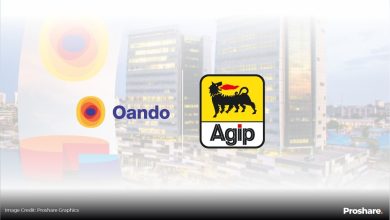GTCO Unaudited 9M 2022 Result: Net Interest Income Up 16%, Despite Retained Earnings 7.2% Dip

GTCO has regained some earnings mojo as profit numbers rise against Q1 2022’s stumble. The Holdco saw its profit before tax (PBT) rise +11.7% from N151.9bn in 9M 2021 to N169.7bn in 2022. The earnings bounce was due to a +16.4% rise in net interest income (NII). Alongside the earnings growth, the bank had a cleaner loan book (lower impairment charges), increased customer deposits, and larger total assets.
Compared to other tier 1 banks, GTCO lags behind the industry’s digital banking growth as its e-business income suffered a -3.1% decline in 9M 2022 and contributed a smidgen to the group’s total earnings.
Analysts noticed the group saw a +13% rise in operating expenses as its cost-to-income ratio (CIR) rose to 43.9% from 43.1%. The financial holding company (Holdco) has been known for its strict cost containment strategy, but current inflationary pressures have led to a growing squeeze on operating costs.
Key Highlights
- GTCO’s net interest income was up by +16.4% between 9M 2022 and 9M 2021, with support from interest income and fees and commissions
- Profit before tax (PBT) grew by +11.7%, while profit after tax (PAT) saw a marginal rise of +0.7% between 9M 2021 and 9M 2022.
- The group’s depreciation and amortization rose by +0.8% from N26.9bn in 9M 2021 to N27.1bn in 2022.
- Between 9M 2021 and 9M 2022, UBA’s loans and advances rose by +6.1% to N1.8trn
- The Holdco’s customer deposit rose by +13.7% to N4.3trn in 9M 2022 from N3.7trn, contributing to a +33.4% rise in interest expense
- Shareholder’s equity rose slightly to N872.8bn in 9M 2022 from N842.5bn in 9M 2021.
- Earnings per share (eps) increased to N4.55k in 9M 2022 from N4.55k in 9M 2021.
- Retained earnings dropped by -7.2% from N206.5bn in 9M 2021 to N191.6bn in 9M 2022.
Share Price Movement
GTCO’s share price has given a negative return of -31.5% as of September 30, 2022. The negative return mirrors the NGX banking sector index, which has a -7% negative return. The volatile share price was bearish, suggesting investors sustained profit-taking. The share price slipped to a support price of N17.80k on September 30, 2022 (see chart 1 below).
Chart 1:

Profitability
During the outbreak of the COVID-19 pandemic, the group saw profits drop. Profit before tax (PBT) fell to a record low of N151.91bn in 9M 2021 from N170.7bn in 9M 2019. The group’s profit rebounded in 9M 2022, rising to N169.7bn near a recent profit of N170.7bn in 9M 2019. The growth came from increased income from loans and advances to customers, investment securities, fees, and commission income. However, analysts observed that the group’s operating income dropped by -31.3% in this quarter, a significant decline in dividend income, foreign exchange revaluation gain, and lower recoveries. The profit after tax increased slightly by +0.7% from N129.4bn in 9M 2021 and N130.3bn in 9M 2022 as the +74.9% rise in income tax fed into the group’s earnings (see chart 2 below).
Chart 2:

Net interest Income (NII)
The tier 1 bank showed resilience in its income generation in 9M 2022 as interest income rose by +14.4% with support from loans, advances, and investment securities. The group’s interest expenses had a higher growth rate of +33.4%, driven by its large customer deposits. Compared to 9M 2021, the group’s net interest income (NII) rose by +16.4% to N189.7bn (see chart 3 below).
Chart 3:

Impairment Charges
GTCO has consciously scaled down its impairment charge; it fell to N5.99bn in 9M 2021 from a record high of N10.14 in 9M 2020 during the COVID-19 pandemic. In 9M 2022, it dipped to N3.70bn as the group’s 12-month expected credit loss fell by -60%. Although the bank’s non-performing loans increased marginally from N105.2bn in 9M 2021 to N108.4bn in 9M 2022, the decline in impairment charge suggests an improvement in the group’s loan assets quality (see chart 4 below).
Chart 4:

Total Assets
The financial group’s total assets rose to N5.81trn in 9M 2022 from N5.14trn in 9M 2022. The growth came from the +6.1% increase in loans and advances, +26.9% in property and equipment, and +56.8% in intangible assets. Analysts noticed a -44.4% decline in deferred tax assets from N10.4bn in 9M 2021 to N5.79bn in 9M 2022, indicating a reduction in tax shields in 2022 (see chart 5 below).
Chart 5:

Cost-to-Income Ratio (CIR)
GTCO sustained its cost-containment strategy despite inflationary headwinds, with analysts computed cost-income ratio (CIR) rising slightly to 43.9% in 9M 2022 from 43.1% in 9M 2021. GTCO CIR compares favourably with other first-tier banks that have seen CIR rise on stronger domestic inflation pressures and higher Central Bank (CBN) cash reserve ratio (CRR). The group’s operating expenses rose by +13% from N123.5bn in 9M 2021 to N 139.5bn in 9M 2022, while operating income rose by +11% to N317.5bn (see chart 6 below).
Chart 6:

Performance of PBSI’s Tier 1 Banks in 9 months 2022
Reviewing the performance of tier 1 banks in the 9M 2022, Zenith had the highest PBT, followed by GTCO, while Access Holdco came third. StanbicIBTC and Fidelity bank stood as the last two highest-earning tier 1 banks at N68.9bn and N37.79bn, respectively. In terms of year-on-year (Y-o-Y) growth, StanbicIBTC and Fidelity led with 52.2% and 34.7%, respectively, while others had less than a 15% growth rate. Concerning investor ratios, Fidelity Bank had the least return on equity (RoE) of 15.20% and the highest cost-to-income ratio (CIR) of 68.8%. Access holding saw the highest non-performing loan ratio of 6.18% as of H1 2022. StanbicIBTC posted the best loan asset quality with an NPL of 2.60%. The rise in banks’ CIR was due to persistent inflation pressure that continued to Q4 2022 (see charts 7 & 8 below).
Chart 7:

Chart 8:

Ending Note
The Holdco’s performance in the 9M 2022 felt the heat of the economic headwind, recording a marginal increase of +0.7 in net earnings after a decline in Q1 2022. Generally, the banking sectors have seen a significant rise in interest income this year with the high-interest rate environment, which helped to widen their profit. However, GTCOs’ interest income growth was insufficient to move up the net earnings as the less inflow from E-banking pulled it down. In Q4, the group needs to deliberately scale up its E-banking income and interest income to improve net earnings.






